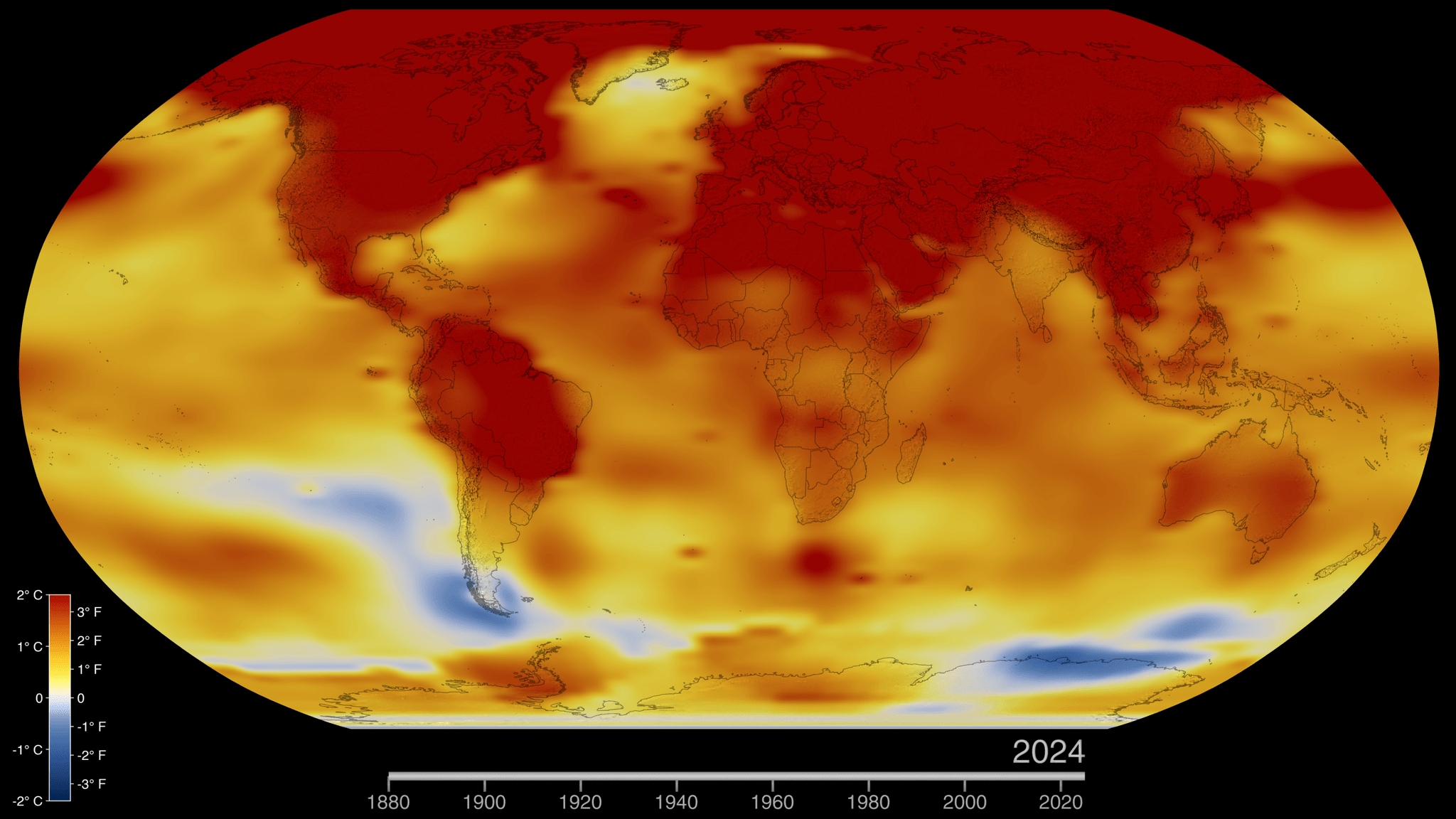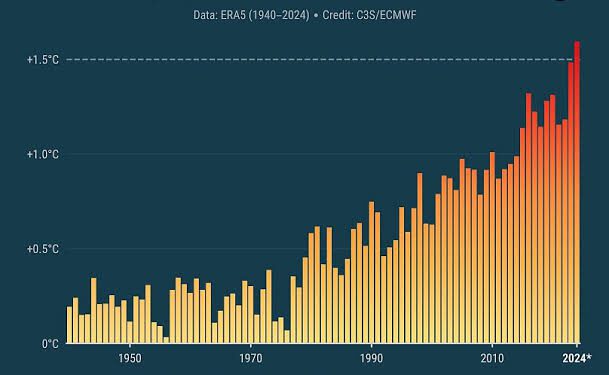The Earth’s surface temperatures in 2024 broke all records, making it the hottest year since global record-keeping began in 1880, said NASA scientists. Temperatures reached as high as 2.30°F (1.28°C) above the agency’s 20th-century baseline (1951–1980), making it a critical wake-up call on climate change.
A Streak of Record-Breaking Heat
The 2024 temperature spike follows an unprecedented 15-month heat streak beginning in June 2023. For much of the year, global temperatures consistently exceeded 1.5°C above pre-industrial levels, a critical threshold highlighted in the Paris Agreement. NASA Administrator Bill Nelson described the situation as a “shattered record,” underlining the growing consequences of climate change, from intensifying wildfires to extreme weather events.

Rising Greenhouse Gas Emissions
NASA scientists attribute this warming trend to heat-trapping gases like carbon dioxide and methane. Atmospheric carbon dioxide levels have risen from 278 parts per million in pre-industrial times to about 420 ppm today. Record increases in carbon emissions from fossil fuel consumption in recent years have compounded the acceleration of the warming trend.
El Niño, a natural climate phenomenon, also contributed to the temperature rise in 2024. Its strong resurgence at the end of 2023 has enriched global warmth levels; however other factors such as the 2022 eruption of Tonga’s volcano and reduced pollution may have impacted temperature anomalies.
Effects of Global Warming on the Local Front
The warming’s impacts are now being felt on a level more localised than in the past: “When changes happen in the climate, you see it first globally, then regionally, and now at the local level,” said Gavin Schmidt, director of NASA’s Goddard Institute for Space Studies. In many areas, it has presented as intense precipitation, heat extremes, and growing flood damage – real-life experiences with climate change.

Data in Action
NASA’s analysis uses data from tens of thousands of meteorological stations worldwide, in addition to sea surface temperature data from ships and buoys. Independent studies by NOAA, Berkeley Earth, and other international agencies all confirm the same alarming trend: the last decade has been the warmest on record.
Read More: Climate ‘Whiplash’ Linked to Raging LA Fires
As Earth inches closer to Pliocene-era warmth, when sea levels are already significantly higher, NASA and other organisations underscore the crucial need for immediate action. Unless drastic emission-cutting measures are undertaken soon, long-term consequences of increasing temperatures will make life on Earth more dire, as it would be unlike life known to date
Stay tuned to Brandsynario for the latest news and updates










































